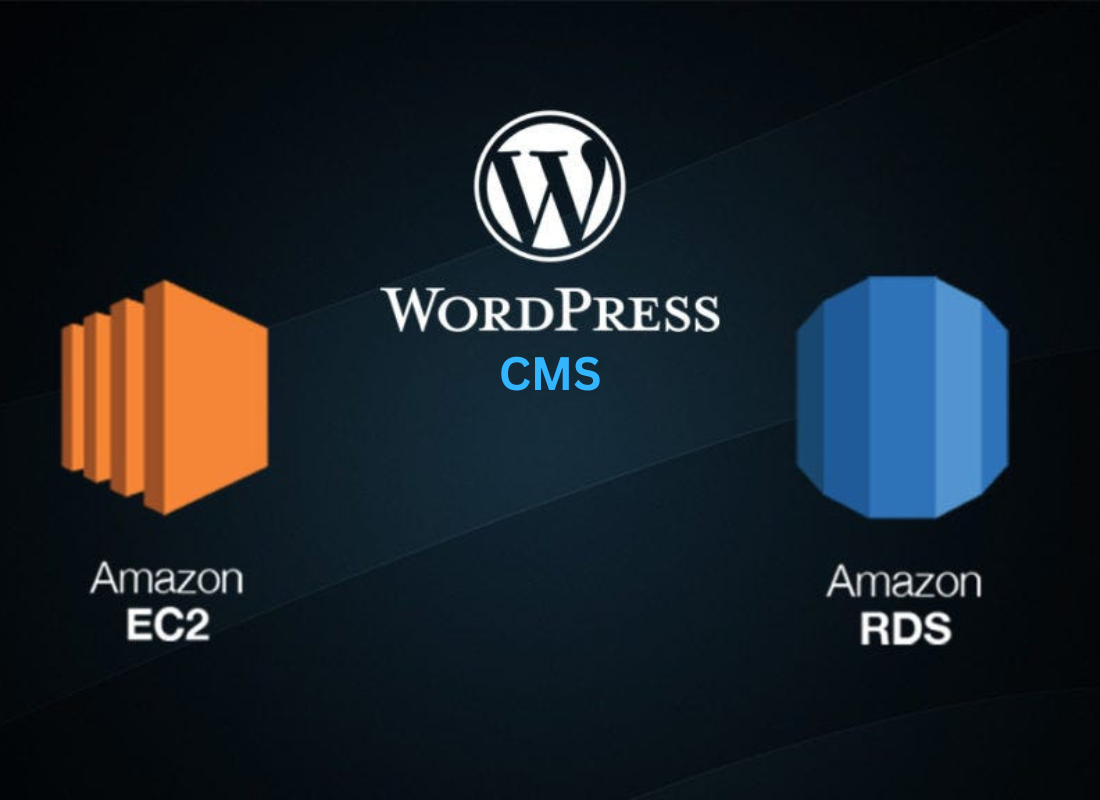It’s important to realize that social media engagement is a metric that entails more than just the accumulation of followers across social platforms. Moreover, businesses building their social media engagement can benefit from better ROI and marketing outreach. Not to mention, a more significant brand reputation awareness makes it easier to attract new customers.
Notably, social media engagement conversations can occur on individual social media platforms, such as Instagram, Twitter, Facebook, and LinkedIn, third-party online review websites, or through blogs and other community forums. In comparison, a robust social media engagement strategy allows businesses to remain in constant contact with their customers.
For instance, the best strategy to create awareness and drive a business reputation presence effect is by advancing brand interests and responding to feedback in a seamless cycle. To ensure effective business marketing, marketers track social media engagement. Thus, social media can be a powerful tool a business or organization can use to reach its audience.
This allows for measuring shares, likes, and comments on a social media post. It’s a standard metric for determining the effectiveness of a social media marketing campaign. Often, most social media managers study engagement metrics to determine if their audience is paying attention to their content. So, let’s learn more about the role of social media engagement.
Understanding What Social Media Engagement Is All About In Marketing
To enumerate, Social Media Engagement is a tool that measures the public shares, likes, and comments for an online digital business or web-based brand efforts in social media realms. At the same time, it’s worth mentioning that engagement has historically been a standard metric for evaluating social media performance but doesn’t necessarily translate to sales.
Like any metric, social media engagement should not be viewed in a vacuum. Balance engagement with content marketing and PR efforts and knowing how to use it for effective marketing means understanding the systems behind the most popular social media platforms and how people use those application systems. Success requires careful and conscious effort.
According to the social media management platform Hootsuite’s The Global State of Digital 2022 report, 59.3% of the human population are active social media users. Let that sink in – that’s 4.2% (or 190 million people) more than last year. The world is becoming an ever-increasingly digital one. ‘Login or switch off,’ the 21st century seems to be saying. ‘no third option.’
The top popular social media websites are TikTok, Facebook, Instagram, and Twitter, which serve different niches, demographics, and industries. Remember that each platform has unique mechanisms for target users to express appreciation for individual posts and posters. At the same time, result metrics are measured differently across each platform.
Consider the following:
- TikTok: Shares, loves, and followers
- Twitter: Re-tweets and followers
- Facebook: Shares, Likes, and followers
- Instagram: Likes and followers
Some of these social media platforms also utilize things like emojis in their content delivery. While shares and likes tell you about the popularity of a given post, follows indicate a higher level of investment, meaning users want to see more of your content regularly. Follows are, therefore, a conversion similar to getting a visitor to sign up for an e-mail list.
In most cases, social media posts can be shared for many reasons. However, not all of them tremendously influence the intended target audience. On the contrary, social media engagement is only as positive as its reputation: going viral over a poorly thought-out tweet can cause a tsunami of bad publicity that proves unshakeable.
Why Social Media Marketing Is An Important Tool For Digital Online Brands
Content is the currency of the digital age. Content. Content. Content. Ka-Ching! We can’t emphasize it enough. But how does that currency move, you might ask? And how is it transferred? There’s no tap-and-go when it comes to content — no swipe-and-pay — social media. If the content is the currency, we can say that social media is the Visa, MasterCard, or Amex.
And that means Facebook, Twitter, Instagram, and TikTok are the banks that prop up this digital world of retweets and email blasts. The importance of Social Media Marketing (or SMM, in short) — using platforms like those just mentioned to increase brand awareness and proffer products or services and solutions to potential customers — can’t be overstated.
In general, SMM is all about utilizing social media platforms like TikTok, Facebook, Instagram, LinkedIn, Twitter, and the like — to promote your business or brand profile and sell products or services to target users and potential customers. If you begin an open dialogue online, engaging with people in the comments section, then that’s social media marketing.
Equally important, if your brand launches a new item — a cruelty-free face cleanser or a renewable feedstock made from leftover food – and you tell your audience via social media, guess what? That’s social media marketing! Still, if you’re telling stories in the digital age — whether with words, images, video, or audio — then that’s SMM also — you get the point.
Learn More: Social Media Marketing (SMM) | 10 Basic Steps To Do It Right
Be that as it may, with new social media networking applications popping up daily, it can be a challenge to figure out which social media platforms will be most valuable for investing your time and money. Should you go all in on industry stalwarts like Instagram and Facebook? Or rather, should you target younger audiences who consistently use Snapchat and TikTok?
Still, which are the best social media sites and internet-based networking platforms for functionality across the World Wide Web (WWW) and mobile devices? Of course, questions like these follow small businesses and corporate marketing teams alike. Before deciding which social networking apps will suit your brand, you must know the key benefits first.
For instance, with over 1.5 billion monthly users, a Facebook presence has become necessary for online and offline businesses. But the Return On Investment (ROI) for social media marketing efforts is complex, and engagement is a blanket metric that doesn’t describe how many users purchase. So, to help you stay on the curve, let’s learn what it can do for you.
1. Higher chances of consumer interaction
Further, conversations regarding your organization, industry, and interests are constantly occurring online, whether or not you choose to participate. Only once you join a conversation can you affect its direction and outcome. The use of social engagement tools, along with a sound strategy and strong messaging, allows you to interact with your audience. And also shape the conversation surrounding your brand or product.
2. A way to review and show brand support
Essentially, it is clear to realize that sharing and liking the latest posts on the trends and issues relevant to your industry is a great way to show support and involvement. Assuming you share or respond to appropriate content that doesn’t spark the offense. Another critical point is that engaging with these posts will help to strengthen your reputation. You demonstrate to users, whether they are potential customers or not, that you value the social happenings beyond your business, which generates respect and admiration for your brand.
3. Measure business outreach engagement rate
From tracking the number of views and the number of link or image clicks to finding the optimal times to post and the most successful social media sites for your business. There are many great tools to measure how engaging your posts are.
We recommend the following:
Most Analytics Tools help monitor the levels of engagement on social media, websites, and more. You obtain rich data insights that are perfect for making campaign changes for improvements. Each analytics tool offers something slightly different, so it’s great to experiment with a few to ensure you get the data you need for measuring your social media engagement.
4. Your digital online brand moves with speed
Social media channels move fast. That means once you have posted, it is unlikely that a user will see it a week or even a few days after it’s published. Content is constantly being uploaded all over social sites, particularly on Twitter. That’s why posting up to 3 times spread throughout a day is acceptable for many campaigns to ensure your users see your content. If users think you are inactive and never get their hands on your content, they will likely see you as a pointless person to follow. Saying goodbye to someone is pretty easy if you don’t know them.
5. The marketing media channels are broadly open
For example, publishing your content in a daily local newspaper might be time-consuming and ambiguous. Unlike social media engagement platforms where, as long as you are active, they are vital to show your audience you’re up to date and on top of the latest trends. Moreover, they are always hungry, wanting to know what’s happening with your brand at the moment it occurs. However, post content frequently to keep your audience updated and in the know. Frequent posts or regular blogs (once a month) aren’t cut it anymore! Not only does it keep your followers following you, but it also allows you to attract more.
What Social Media Engagement Rate Is And How To Calculate It
When calculating your Social Media Engagement Rate, it’s essential to note that engagement is a metric used to assess the average number of interactions your content receives per active follower. As such, the engagement rate is calculated as the total number of interactions your content receives divided by your total number of followers multiplied by 100%.
In simpler terms, it measures how well your content performs independently of your follower count. What counts as an interaction depends on the platform but most often refers to likes, reactions, shares, and comments. Any business’s social media engagement rate is calculated as total engagement divided by the total number of followers, then multiplied by 100%.
The engagement rate formula is as follows:
Engagement Rate = Total Engagement / Total Followers x 100%
In this case, we consider Total Engagement the sum of all interactions (shares, comments, reactions, etc.). At the same time, we are also considering the Total Followers as the number of people who follow your business profile or brand account through social media channels. For example, company A posted on Facebook to their 10,000 fans and then achieved the following:
- 200 likes
- 100 comments
- 50 shares
This means that their total engagement would be 350 (200+100+50).
Let’s plug this into the following equation:
Company A’s Engagement Rate = 350 / 10,000 x 100% = 3.5%
And there you go! Now you can create your engagement rate calculator with this easy formula.
The Simple Steps To Increase Your Social Media Engagement Rate
To begin with, social media is fast becoming the dominant communication method worldwide, in particular, creating both a need for active response and an opportunity for brand sentiment improvement. Social media accounts with more prominent followers will see more interactions in their posts. However, that doesn’t necessarily mean their content is better.
As you can see from our earlier illustration, the social media engagement rate calculation process gives us an assessment of the quality of the content, independent of the number of followers an account has. Through social media, businesses can represent their brand and attract a relevant audience, gaining potential new customers while keeping existing ones excited.
Keeping abreast of the latest updates., and responding to likes, comments, or shares will foster a sense of community and build engagement across the target audience. It allows you to increase awareness, generate new leads and sales, boost online or in-person community engagement, grow your audience, and drive traffic to your website and social media pages.
At this instant, social media listening and social media analysis drive an effective social engagement strategy. It can be conducted through a social analytics tool, like CX Social, or by following the topmost best steps and essential tips below. More so for brand marketers to be able to increase their social media engagement rate to achieve optimal business growth.
1. Creative topics coverage for more engagement
Creating content and publishing it on your social feeds is perfect for letting people know what you are about. But, if you don’t have a following, which many new users won’t have, joining groups and creating them will help you get your name.
It’s great to create some of your own in conjunction with joining forums on your expertise. Making multiple groups on your social media platforms and inviting key influencers and prospective customers to join the discussion is one of the most innovative ways to spread your brand.
2. Providing answers to frequently asked questions
Secondly, handing out nuggets of gold to customers is as easy as giving them helpful information and answering their queries. Whereby joining Q&A answer sessions is a great way to provide users with value and gets you seen as a valuable brand.
Moreover, you will become the go-to seller if you can offer relevant answers to customer queries and spark discussion with prospective customers before competitors. However, consumers are becoming more impatient and want immediate answers to their questions. Therefore, having a dedicated customer response team is perfect for catering to those needs.
3. Building quality outbound and inbound links
When researching the most common FAQs in your field, it’s best practice to create in-depth guides or more detailed blog posts to give customers insightful data into their queries. Adding links to these in your responses shows you are willing to go above and beyond to help your customers.
People like to buy from a brand they can trust, know will deliver, and be on hand when things don’t go to plan. By providing a hub of help in each of your responses, you are likely to attract more buyers and become a force to be reckoned with. Use their content if someone else can provide better answers to a query.
Your customers will see that you are there to give them what they need, whether it comes from yourself or not. Also, if your social media feed can provide them with relevant information, whether yours or not, they will be attracted to your brand and encouraged to follow you.
4. Vibrant and channel-specific content sharing
Not only should you share content from different businesses in the industry, but you must also share relevant content with your followers and customers. Mainly, for those brands which are well established, getting your tweet about how you love Thornton’s chocolate shared by Thornton’s themselves can be an exciting moment for that chocolate lover!
In addition to making the customer feel great about themselves for being worthy of going on your business feed, it can lead to them sharing your reply or even screenshotting the evidence of you favoriting or sharing their content. That means more exposure for you. You can spark more customer engagement by simply clicking the share buttons of positive posts around your brand or goods and services. Perfect.
5. Leveraging the best social media influencers
Assuming you have established relationships with influencers in the market, such as bloggers and social media influencers, it is great to utilize these relationships to get your content shared. Ask well-known individuals in your area of expertise to promote your posts in return for a discount or freebie.
This is good for seeing your prospective customers’ brand through a trusted, familiar face. In addition, offering something in return for the shares helps to ensure the influencer feels like they are getting value from collaborating with you. It’s a win-win situation!
6. Consider guest posting and free authoring
These days, some of us are writing guest posts like madpeople — more than we ever have, in fact, in over six years of regular blogging. In addition to our commitment to regularly posting on this website blog, it’s quite an investment of time. So why bother? We believe guest posting is essential for growing your blog readership and platform.
Bloggers need good content. You will build relationships with other bloggers by being a good guest blogger and adding value to someone else’s blog. Also, bloggers make up many online conversations, especially on social media sites like Facebook and Twitter. They can be tremendously influential. Which makes them good friends to have.
7. Custom personalization for your business
By greeting customers with their names, it shows that each response has been carefully crafted for each user by a human. Making the business feel friendly and not like a large corporation. Instead, it brings the brand closer to the customer to help build relationships and customer loyalty.
Signing off a reply with the employee’s name dealing with the inquiry or post also helps bring a name or face that customers can contact. This proves an effective method of making the business more attractive. Since customers feel they are getting help from an actual human rather than just an automated message.
8. Targeting potential leads in conversations
Another excellent tool for increasing engagement is conversing with customers to get them talking to you. By asking questions about the customer’s personal experiences with the goods and services, it can help the brand obtain customer feedback and spark discussion among users.
Surprisingly, customers will form a particular impression of you depending on your writing. For instance, when customers include emoticons in their posts to your brand, it’s wise to use them in return. At the same time, you can create a fun conversation that is visual and interesting for other viewers to read too!
9. Interactive graphics and visual content
Just like emoticons, images and videos are also great additions to social media posts and marketing content in general. One thing is sure; they create a more appealing post that users want to read. But it also caters to those of different browsing styles who may disregard plain text posts altogether. Try including an image, GIF, or short video in your social posts.
As a result, this can make it attractive to all types of users and also increase the accessibility of the posts. Another beneficial way of making your posts more engaging to users is through hashtags. These help keywords stand out in the content and are also great for tracking discussion around a specific topic and connecting with people using that particular hashtag.
10. More research and analytics for remarketing
Besides analytics tools, many tools are available to find new followers. These web apps or sites allow you to join groups based on the keywords so you can join a real-time conversation on the topic you specialize in. In the meantime, social media engagement is beginning to take its rightful throne in the marketing world.
As for many businesses, it’s the critical catalyst for brand growth. Thus, social media is an impressive tool for improving your brand engagement by taking you straight to where the right people are talking about your expertise or industry.
In Conclusion;
If done right, social media engagement’s domino effect can create positive waves for many businesses. Significantly boost brand awareness and increase conversions to improve company profits. Social media engagement is essential because it provides information about content quality and viewer response. Similarly, a high social media engagement rate is crucial.
For one thing, it means a more significant percentage of your audience is interacting with your brand, responding to your posts, or visiting your website. Businesses can benefit by prioritizing social media engagement. There are social media management tools and a dedicated team of competent copywriters and tech-savvy professionals to support you and your business.
In reality, the key to becoming a successful social media marketer for digital online brands and businesses is by increasing the engagement rate. Without delay, promoting your brand through social media is therefore vital to companies. At the same time, getting your content on these channels isn’t what gets you the sales — a mix of marketing tactics can do the trick.
Other More Related Resource References:
- Telegram Search Engine Plus Its Marketing Tools To Use
- Digital Online Marketing | Its Benefits To Web Companies
- 10 Topmost Traditional Marketing Techniques That Still Work
- 7 Marketing Tools For Business Marketers To Get More Results
- Join LinkedIn | Create A Profile To Manage Pages & Groups
Finally, we hope you enjoyed reading and understanding more about social media engagement, why it is essential, and how you can work through the above-revised guide. However, if you have other personal opinions, contributions, suggestions, recommendations, or even contribution questions for free FAQs & Answers, please share them in our comments section.
You can also Consult Us if you need more help and support from our professional social media management and marketing experts. Also, feel free to Donate in support of our great teamwork. Still, you can share this guide with other readers who might find it interesting and helpful. Until the next one, thanks for taking the time to be with us today; you are welcome!




